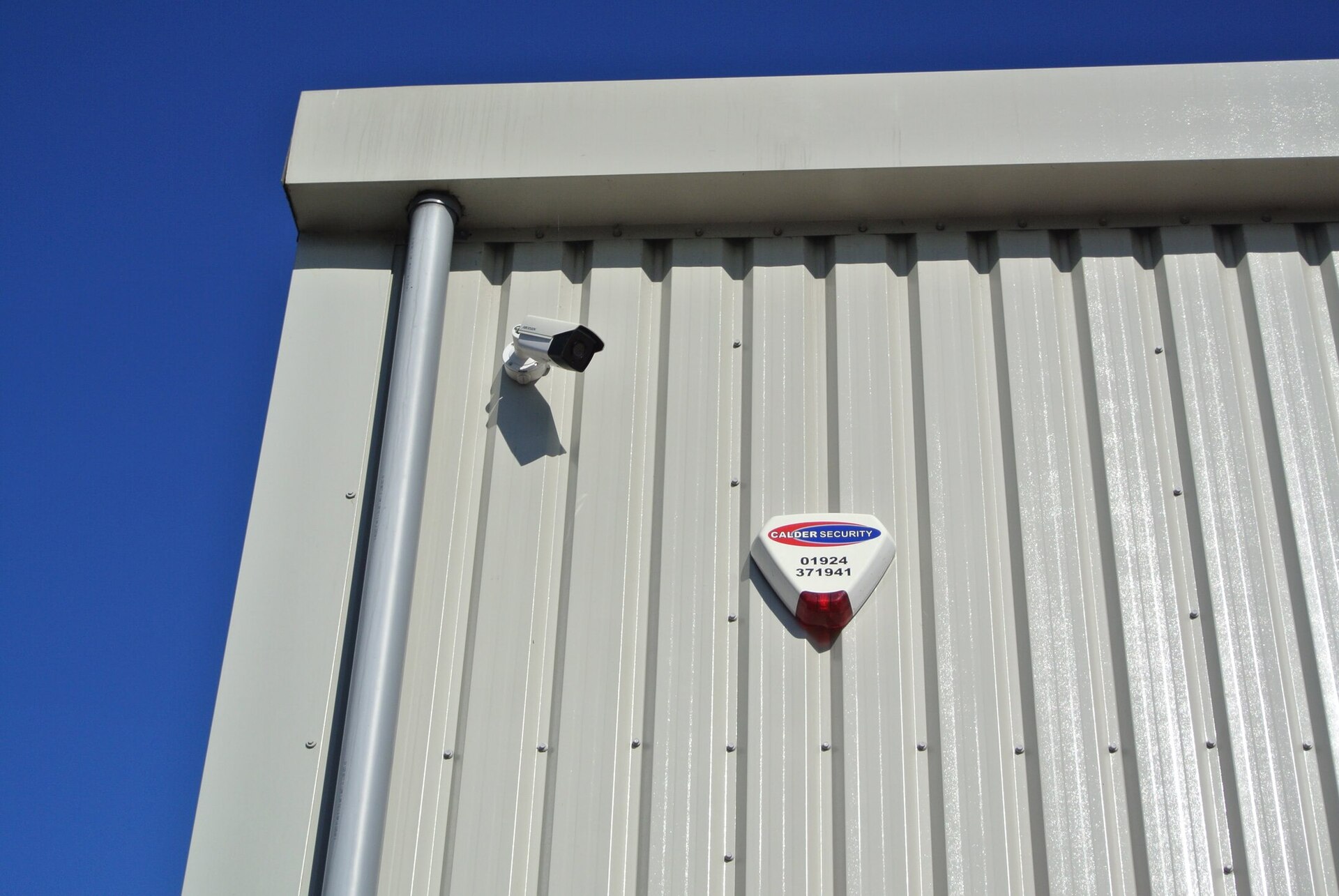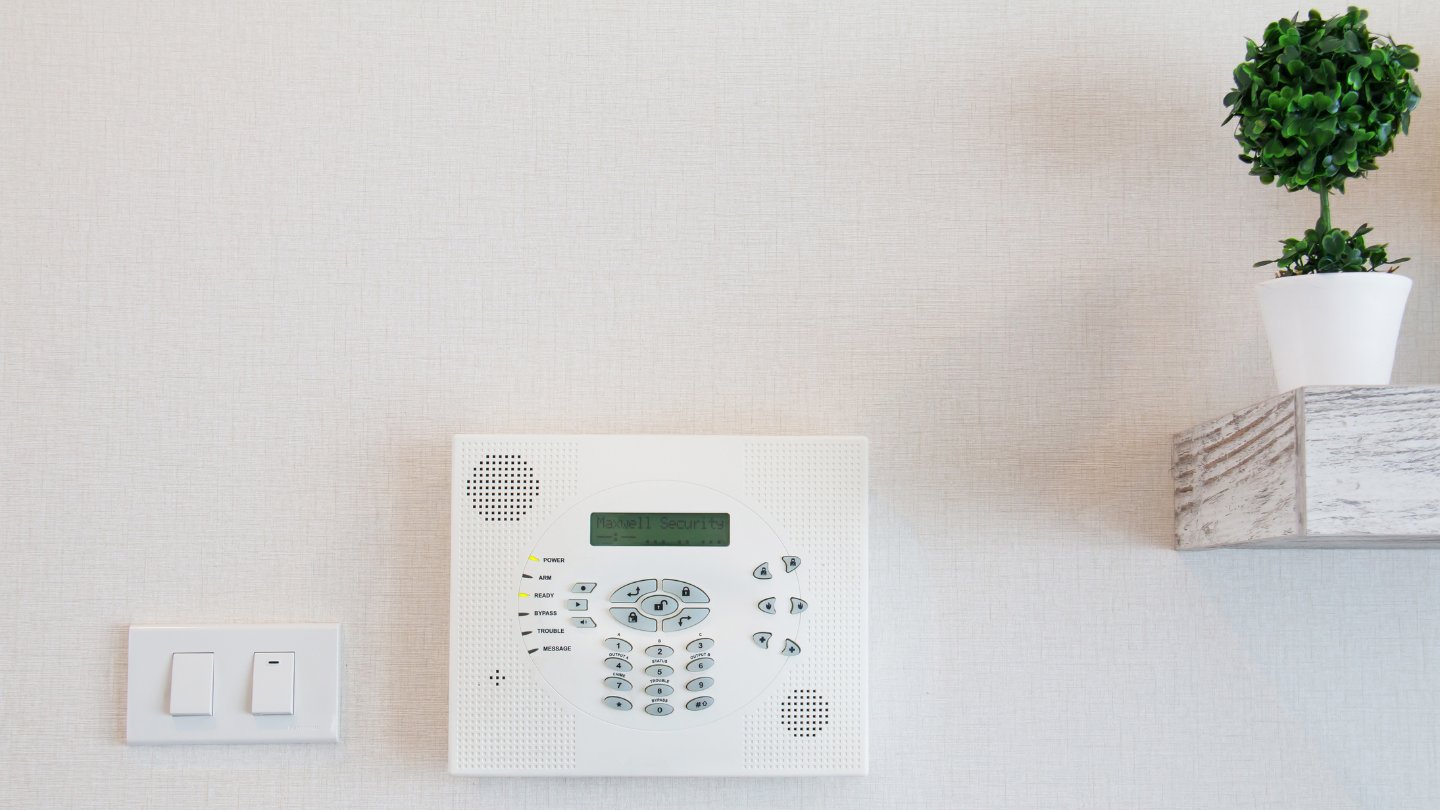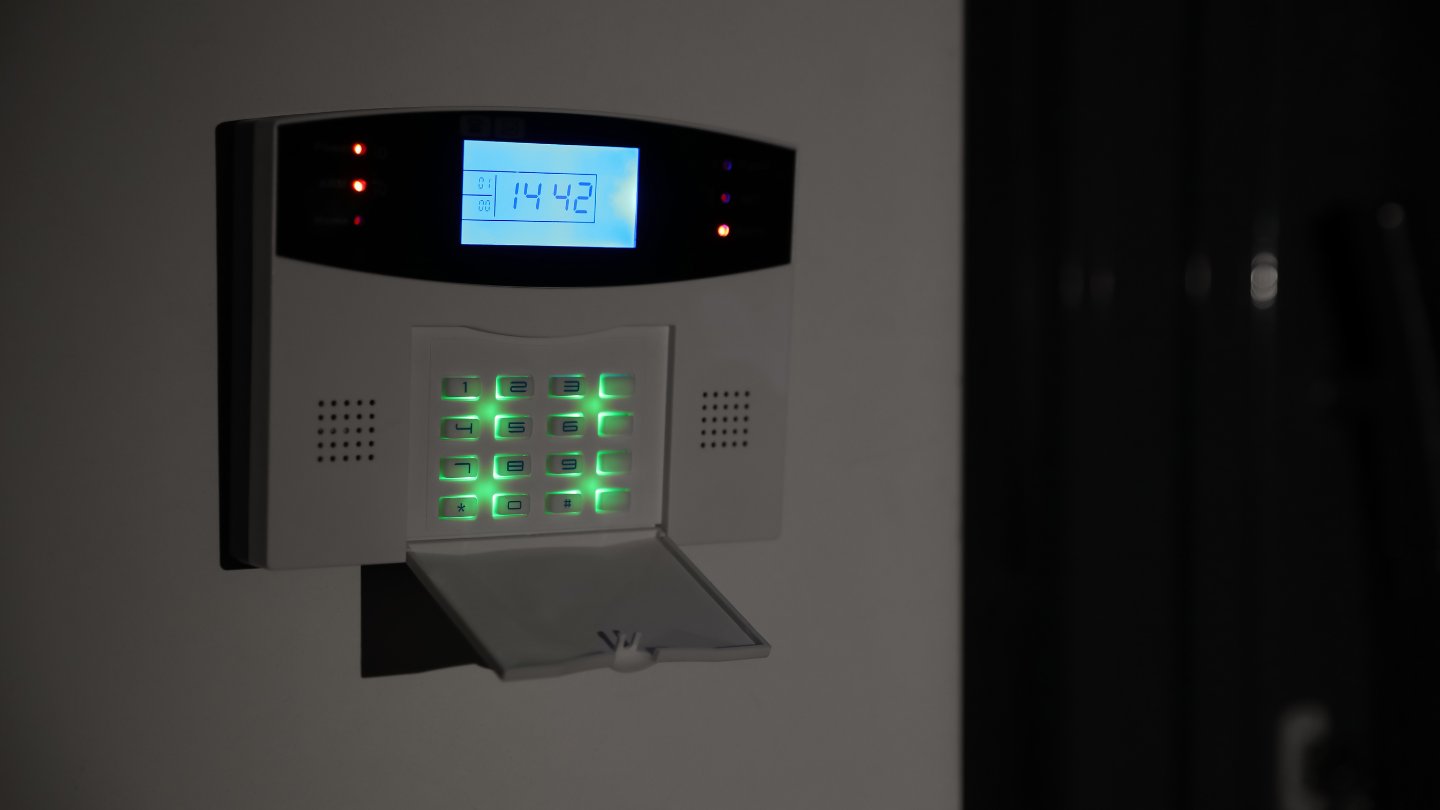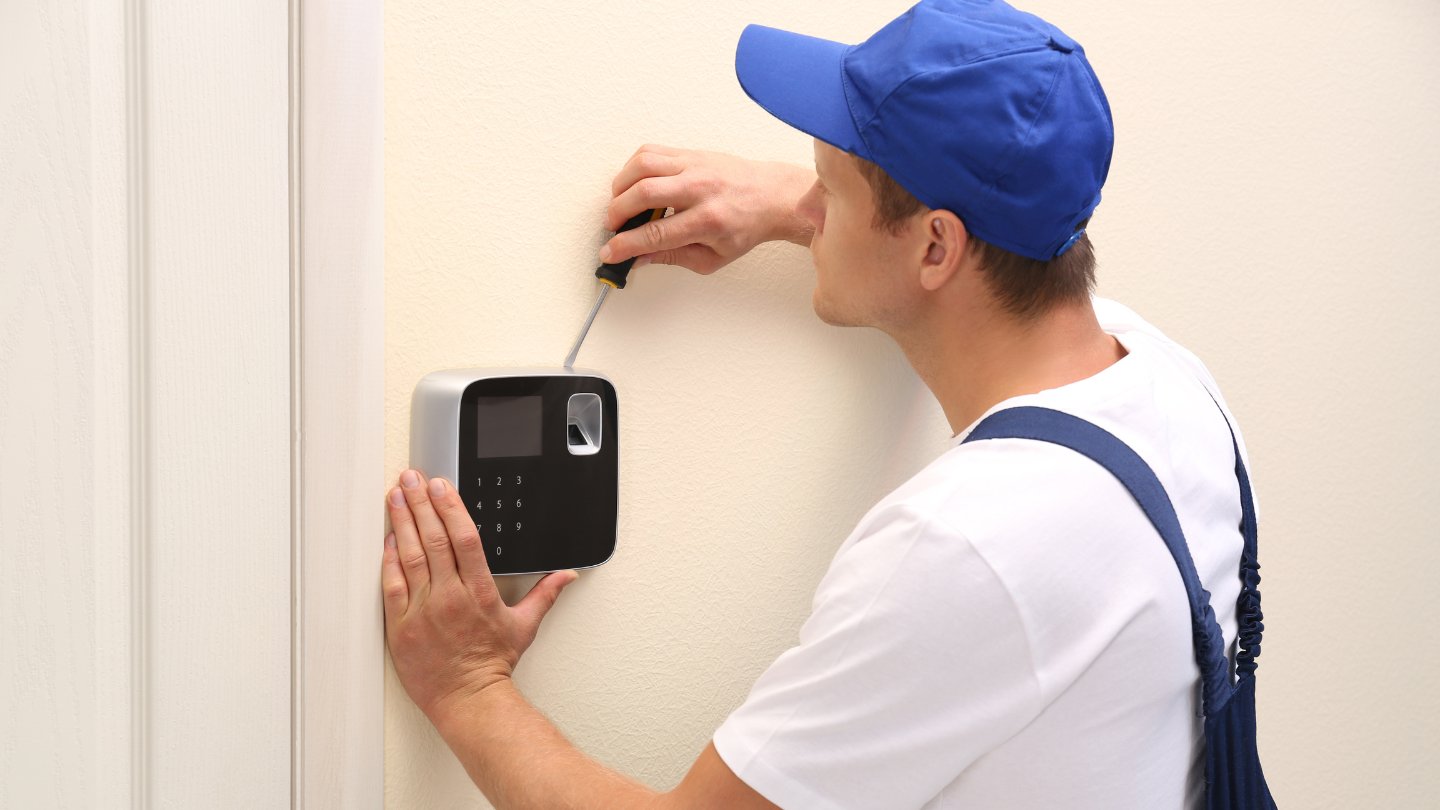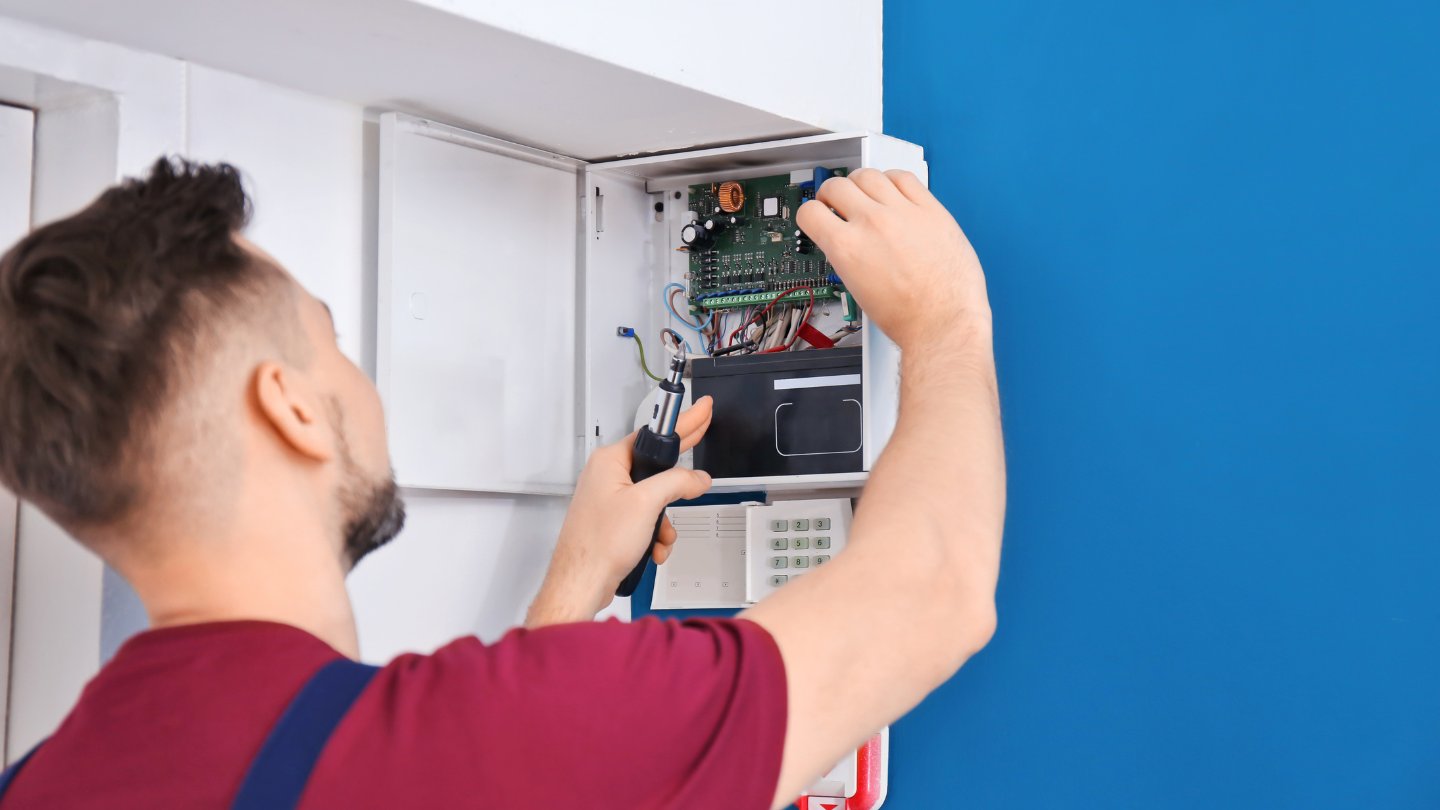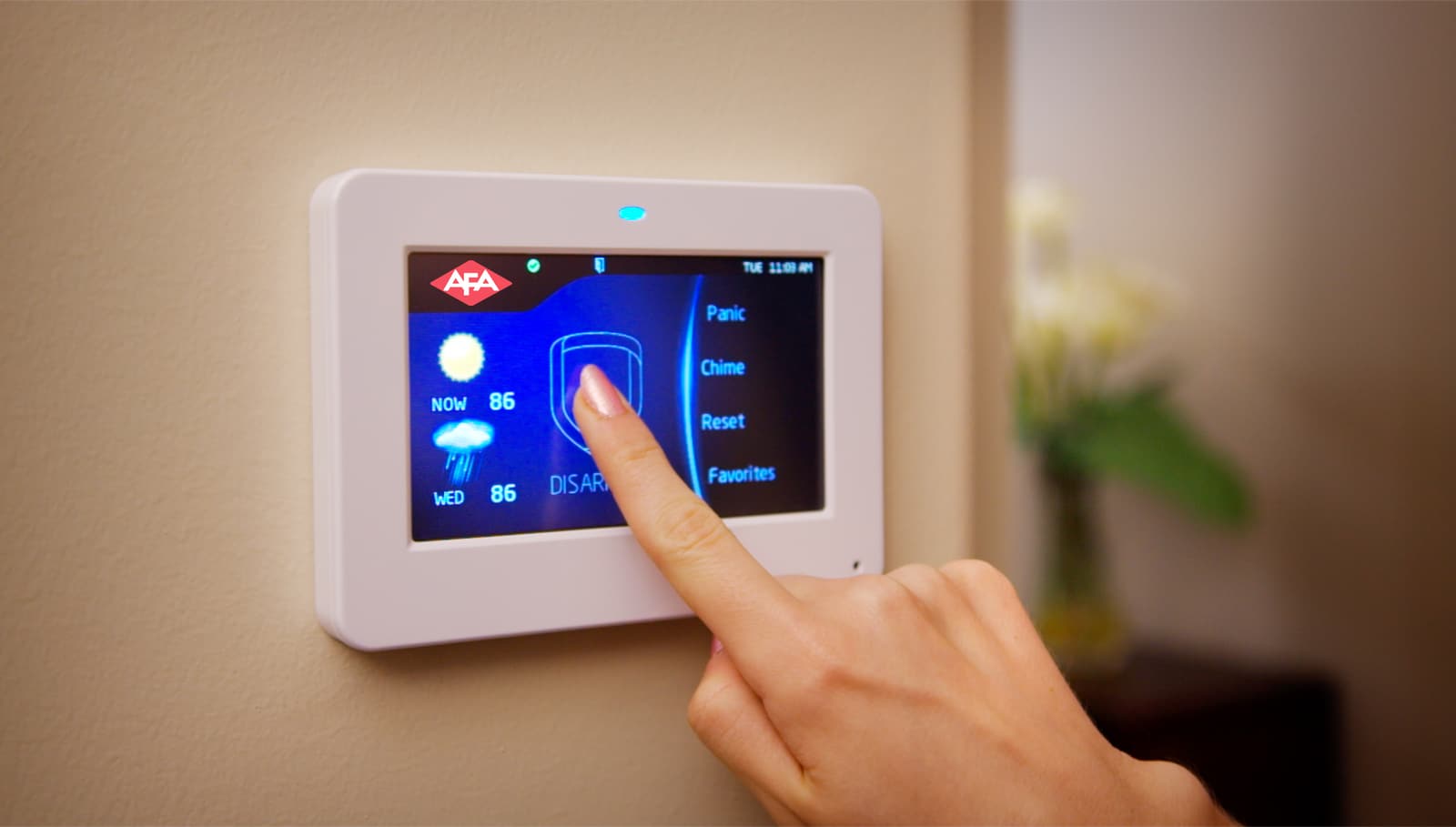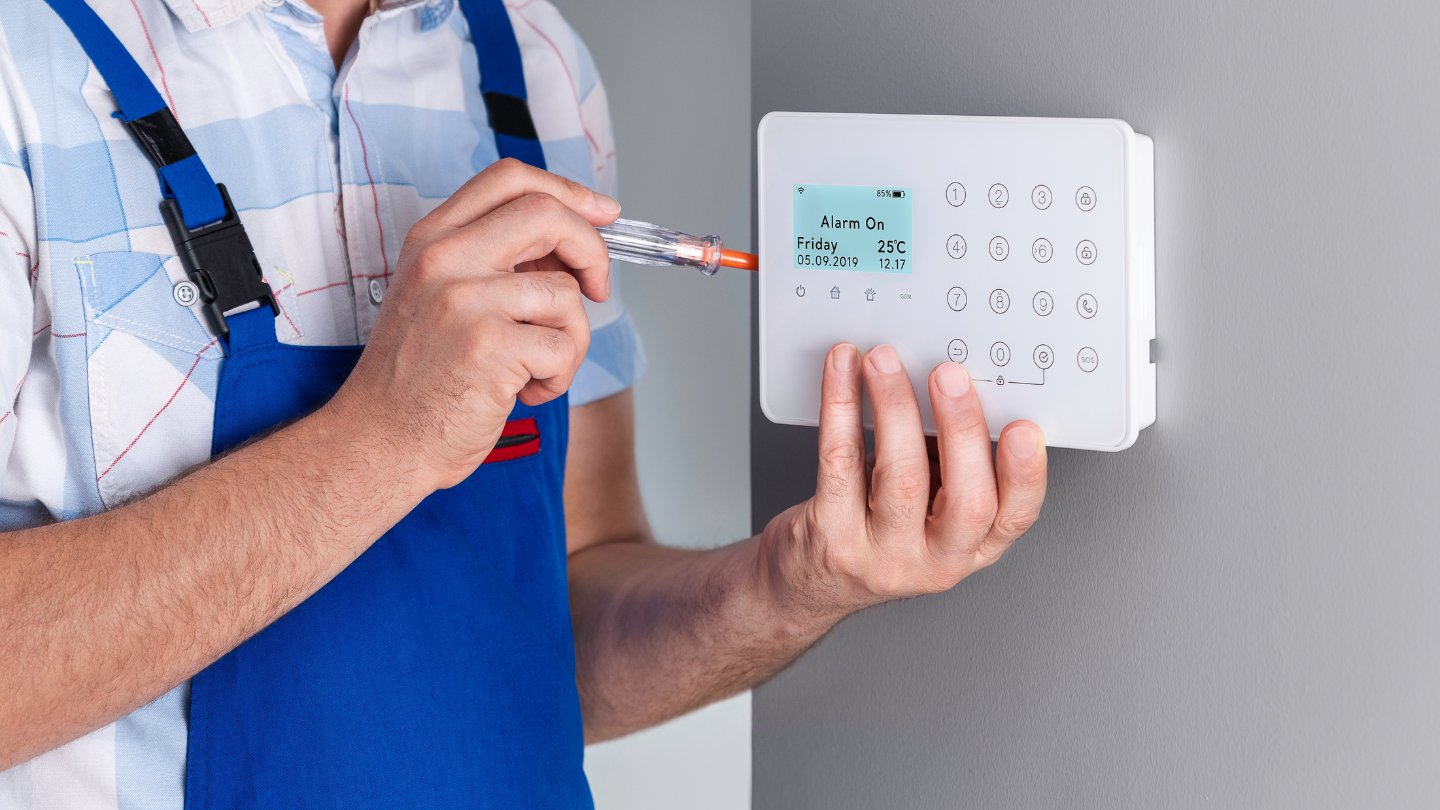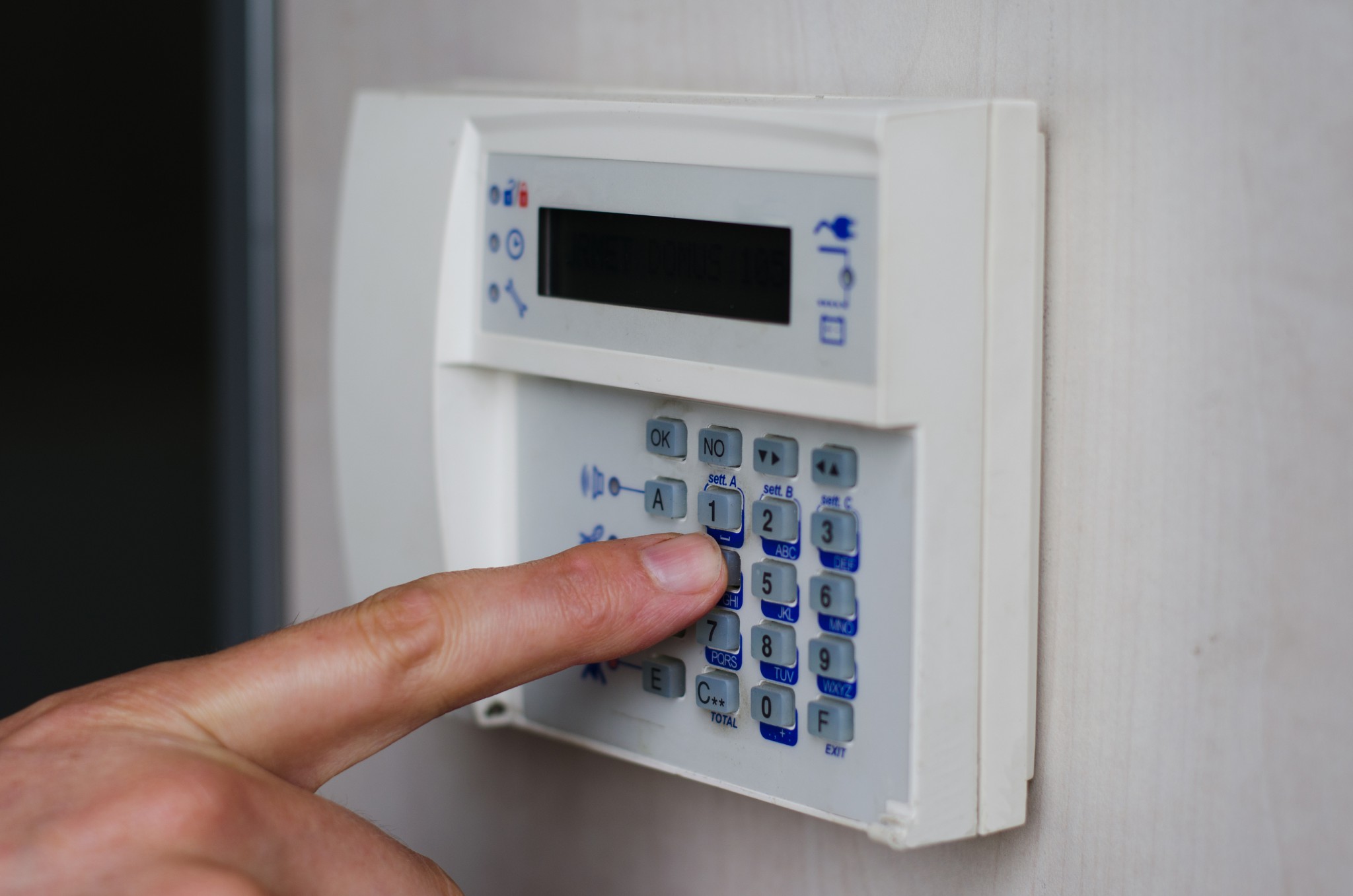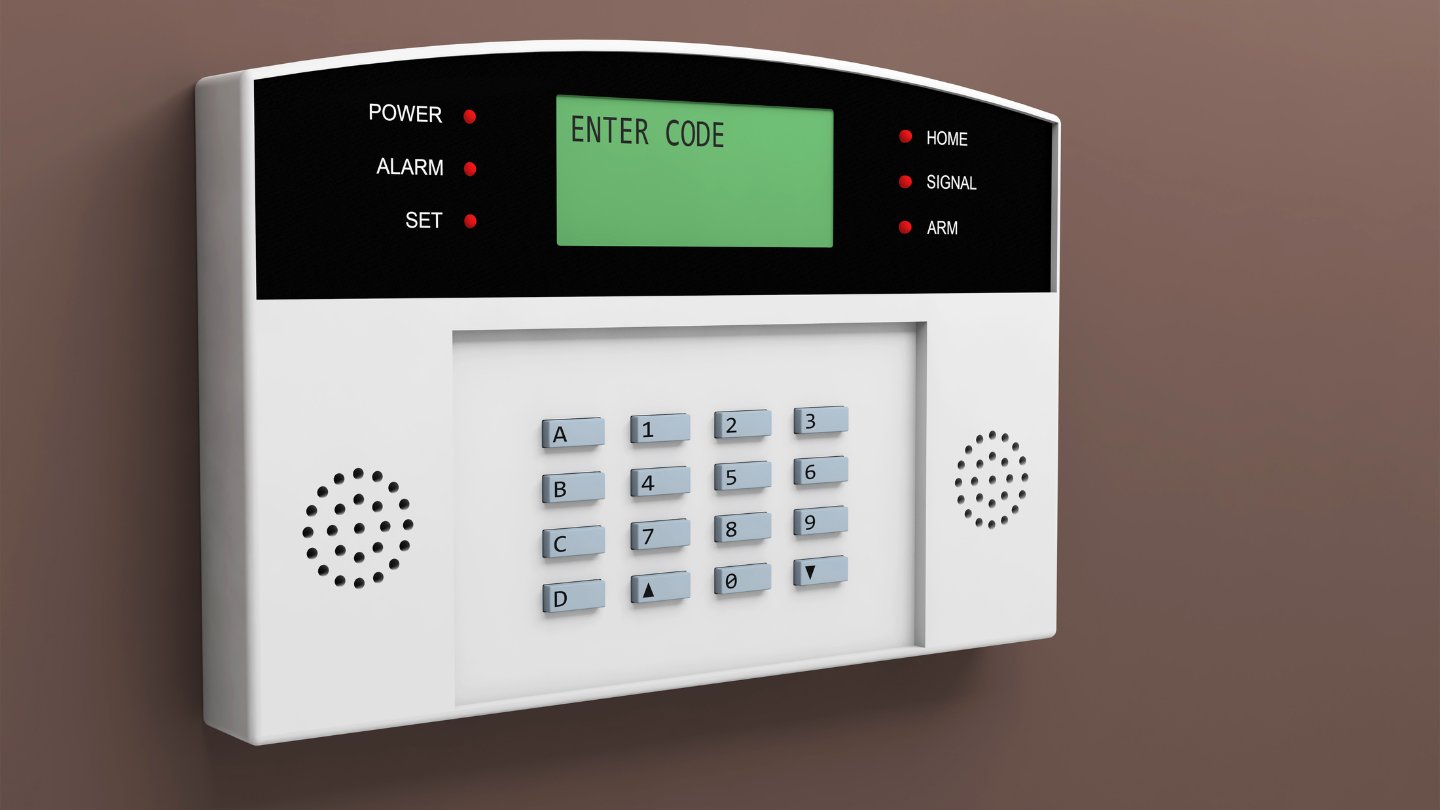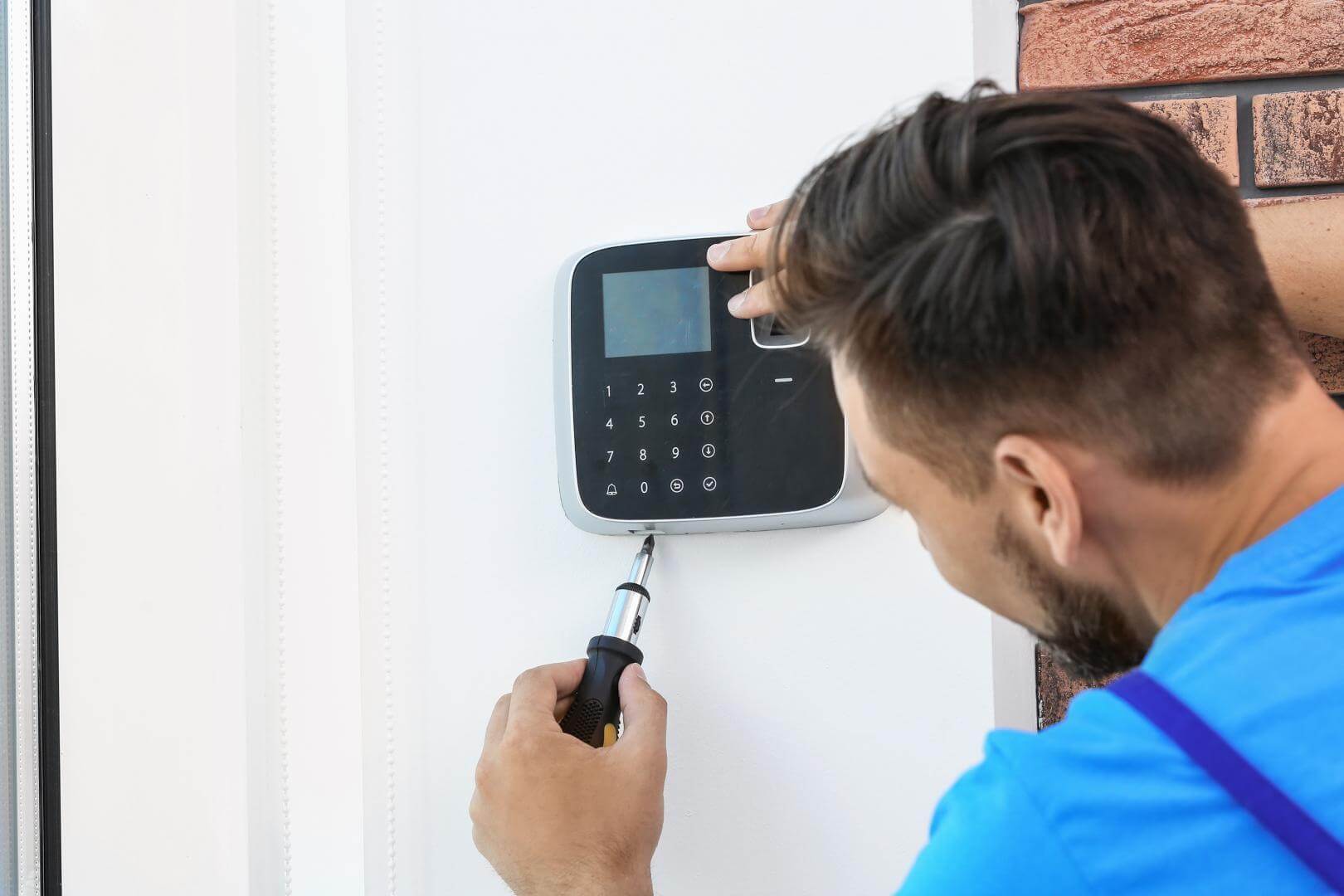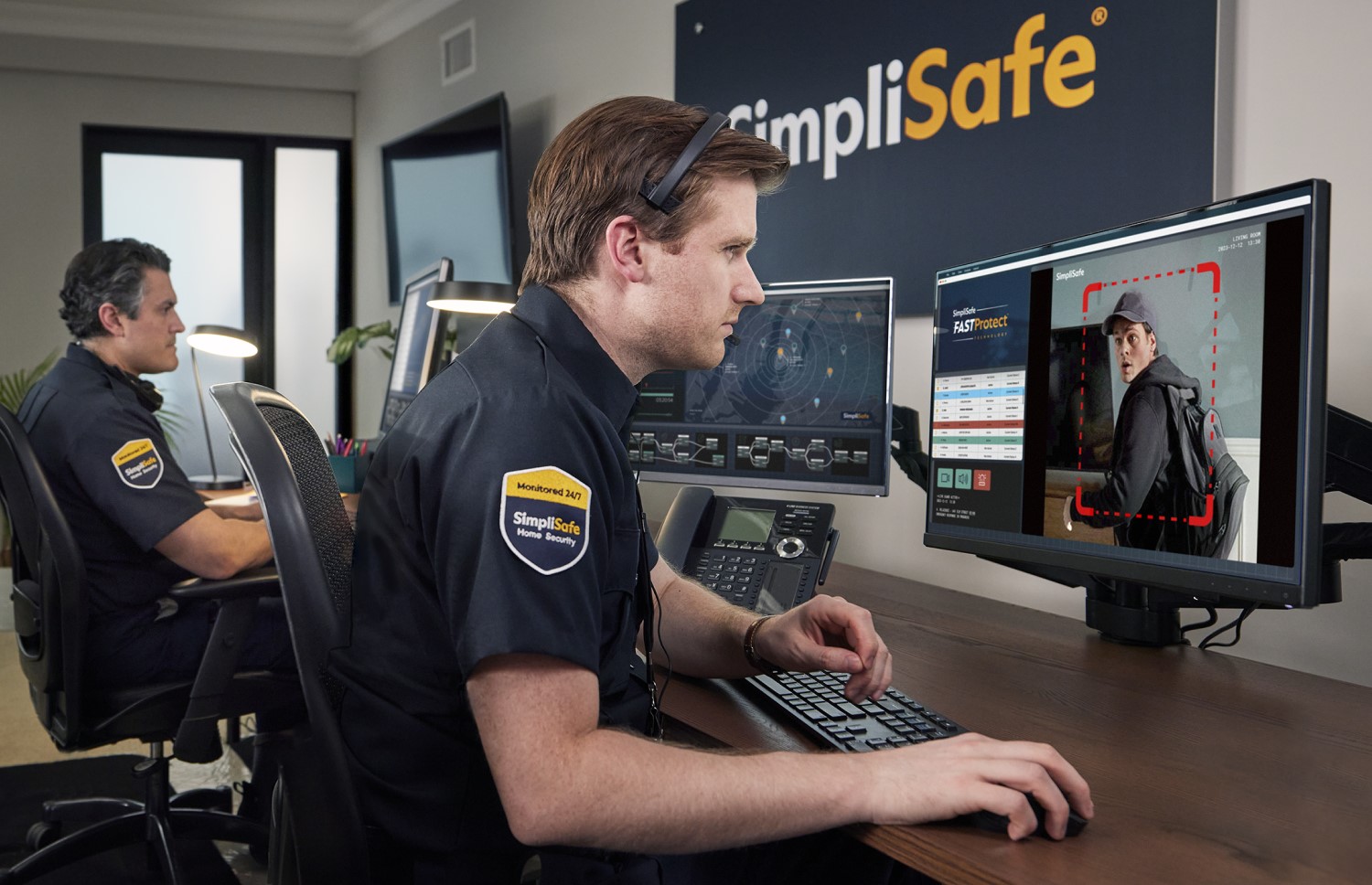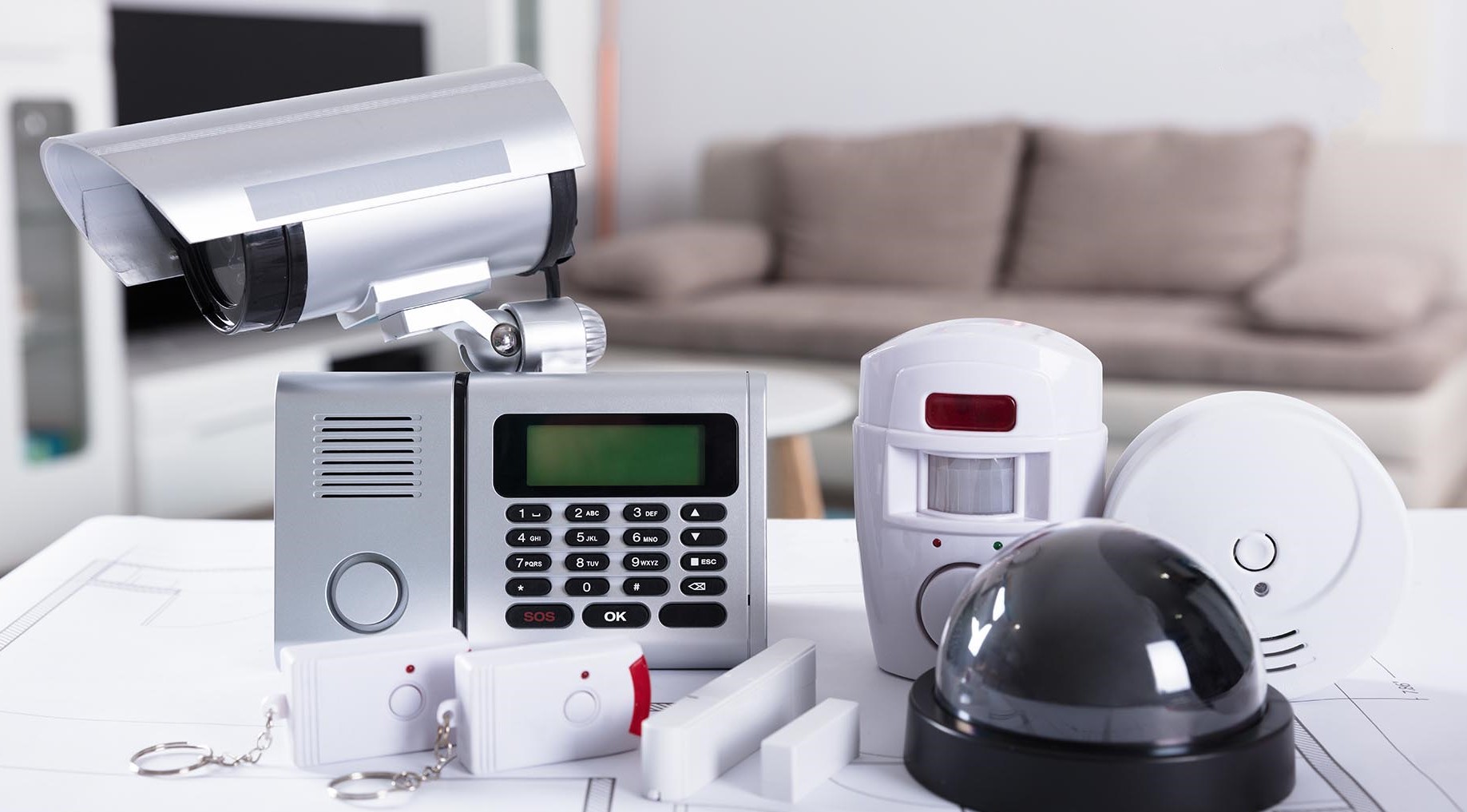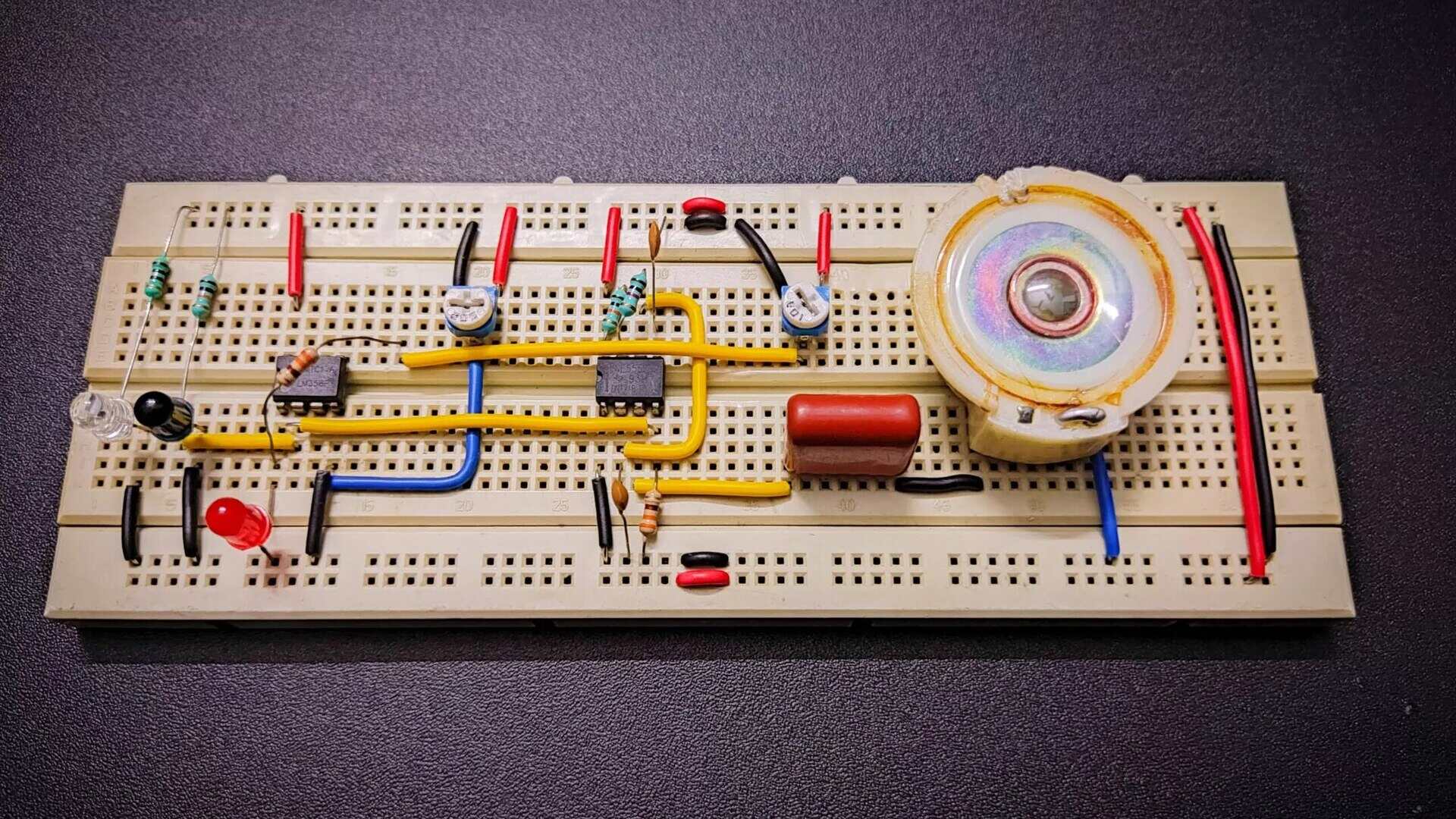Home>Home Security and Surveillance>How Many Types Of Burglar Alarm Are There
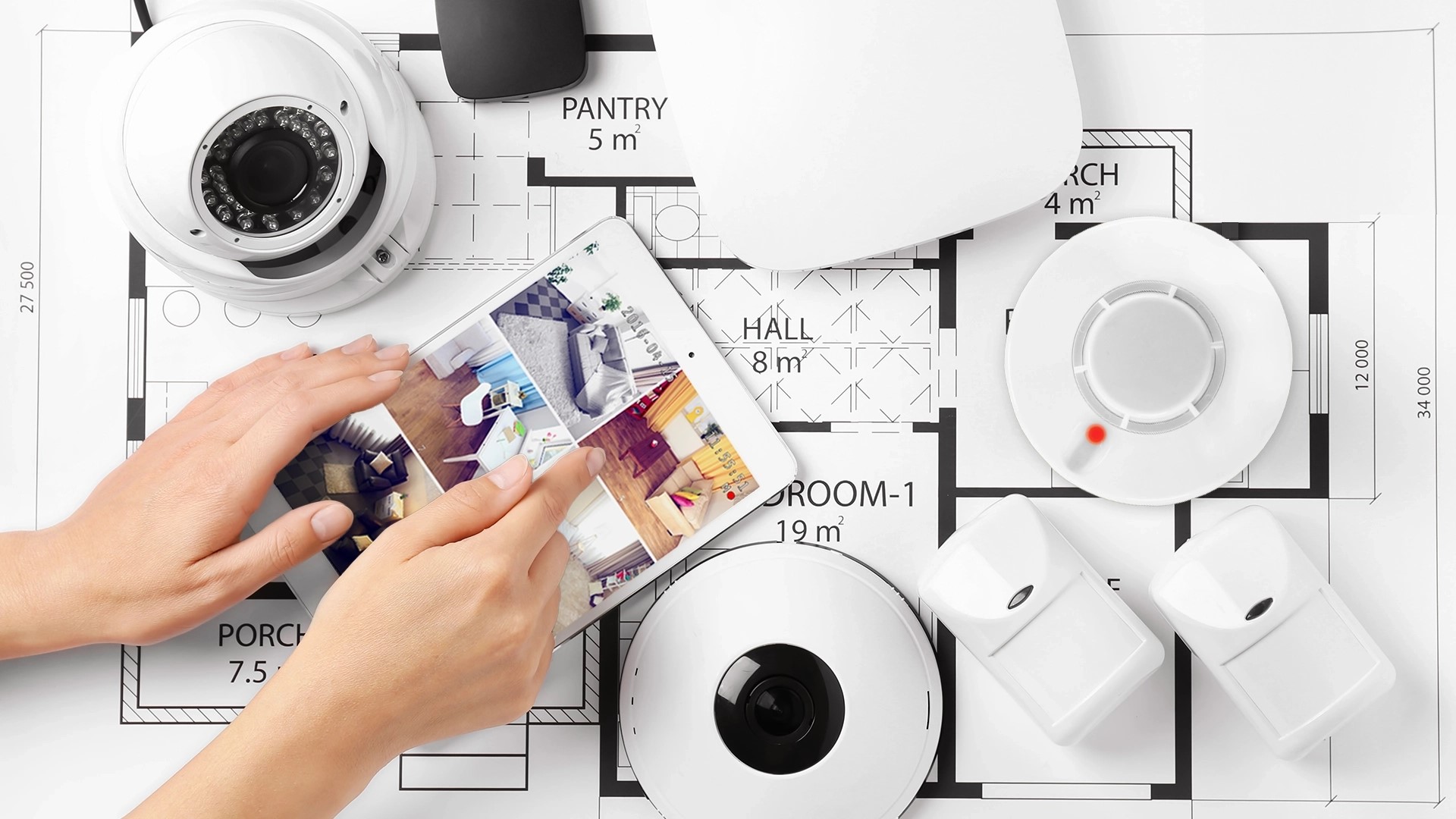

Home Security and Surveillance
How Many Types Of Burglar Alarm Are There
Modified: March 6, 2024
Discover the various types of burglar alarms for home security and surveillance. Make an informed choice to protect your property and loved ones.
(Many of the links in this article redirect to a specific reviewed product. Your purchase of these products through affiliate links helps to generate commission for Storables.com, at no extra cost. Learn more)
Introduction
Welcome to the world of home security and surveillance! With crime rates rising in many areas, protecting our homes and ensuring the safety of our loved ones has become a top priority. One of the most effective and popular ways to secure our homes is through the use of burglar alarm systems.
Burglar alarms are designed to detect unauthorized entry into a property and alert the occupants or a monitoring service. They act as a powerful deterrent against burglars and provide homeowners with peace of mind, knowing that their property is protected 24/7.
In this article, we will explore the various types of burglar alarms available in the market today. From audible alarms to smart alarms, there is a wide range of options to choose from, each with its own unique features and advantages.
Whether you live in a standalone house, an apartment, or a condominium, there is a burglar alarm system tailor-made to meet your specific needs. By understanding the different types of alarms, you can make an informed decision when it comes to safeguarding your home and valuables.
So, let’s dive in and discover the different types of burglar alarms and how they can enhance the security of your home!
Key Takeaways:
- Choose the Right Alarm for Your Home
From audible alarms to smart alarms, there are various options to suit your needs. Consider factors like ease of installation, monitoring, and integration with other security systems to make the best choice for your home. - Regular Maintenance is Key
No matter which alarm system you choose, regular maintenance, testing, and professional monitoring are essential for ensuring the effectiveness of your home security. Invest in a reliable burglar alarm system and take the first step towards a safer and more secure future!
Read more: How To Reset Burglar Alarm
Audible Alarms
Audible alarms are one of the most common types of burglar alarm systems. As the name suggests, these alarms produce a loud sound when triggered, alerting both the occupants of the property and potentially deterring intruders.
The basic components of an audible alarm system include the control panel, sensors, and sirens. Sensors are strategically placed around the property to detect any unauthorized entry. These sensors can be in the form of door and window contacts, motion detectors, or glass break detectors.
When an intrusion is detected, the control panel activates the sirens, which emit a high-decibel sound. The loud noise is designed to alert the occupants and to draw attention to the property, potentially scaring away the intruders.
Audible alarms are effective in small to medium-sized properties, as the loud noise can easily be heard both inside and outside the premises. They are also relatively easy to install and are more affordable compared to other types of burglar alarm systems.
However, one limitation of audible alarms is that they rely on someone being present to hear the sound and take appropriate action. If a break-in occurs when no one is home, the alarm will only serve as a deterrent if potential intruders happen to be nearby.
Nevertheless, audible alarms are a popular choice for homeowners who want a straightforward and cost-effective solution to protect their properties. The prominent sound they emit can be enough to scare off burglars and alert neighbors to the potential threat.
For added convenience and flexibility, some audible alarm systems come with wireless capabilities. This allows for easier installation and enables homeowners to monitor and control their alarms remotely through a smartphone app or a central monitoring station.
In summary, audible alarms are a tried and tested option for home security. Although they have some limitations, their affordability and simplicity make them a popular choice for many homeowners.
Silent Alarms
While audible alarms provide a loud and attention-grabbing deterrent, there are situations where a silent approach may be more appropriate. This is where silent alarms come into play.
Silent alarms are designed to discreetly alert the homeowners or a monitoring service of a potential intrusion without emitting any audible sound. Instead of activating loud sirens, silent alarms typically trigger a silent alert, such as sending a notification to a smartphone app or notifying a monitoring center.
The advantage of silent alarms is that they allow for a covert response to a break-in. Intruders are less likely to be aware that an alarm has been activated, giving homeowners or security personnel the opportunity to take appropriate action without alerting the intruders.
Silent alarms are commonly used in situations where immediate police response is required or where the presence of audible sirens may cause panic or disruption. This can include businesses, banks, and high-security facilities where minimizing the risk to individuals is paramount.
In a residential setting, silent alarms can be connected to a monitoring service, ensuring that authorities are dispatched in the event of an intrusion. This provides an added layer of protection, as the monitoring service can verify the alarm, contact the homeowners, and coordinate with the police if necessary.
One consideration with silent alarms is the need for a quick response. Since there aren’t any loud sounds to alert others or potentially scare off the intruders, it’s crucial for homeowners or the monitoring service to react promptly upon receiving the silent alert.
Furthermore, it’s essential to ensure that the silent alarm system is properly installed and maintained, as any malfunction or false alarm could hinder the effectiveness of the system. Regular testing and servicing of the equipment are necessary to ensure reliable operation.
Overall, silent alarms offer a discreet and effective way to notify homeowners or authorities of a potential intrusion. They are particularly useful in situations where a silent response is crucial or where the presence of audible alarms may cause more harm than good.
Next, let’s explore the world of monitored alarms and how they provide an additional level of security.
Monitored Alarms
Monitored alarms take home security to the next level by integrating a professional monitoring service into the system. Unlike traditional audible alarms, monitored alarms provide round-the-clock surveillance and immediate response in the event of an intrusion.
When a monitored alarm is triggered, it sends an alert to a central monitoring station manned by trained operators. These operators are responsible for verifying the alarm, contacting the homeowner, and coordinating with the appropriate authorities, such as the police or fire department.
One of the key advantages of monitored alarms is the added layer of protection they offer. With a team of professionals monitoring your home, you can have peace of mind knowing that help will be on the way as soon as an alarm is triggered.
In addition to the prompt response, monitored alarms also have the benefit of reducing false alarms. The operators at the monitoring center can quickly assess the situation and determine whether it warrants dispatching the authorities or if it’s a false alarm. This helps to minimize unnecessary police or emergency service callouts.
Monitored alarms can be connected to multiple sensors throughout the property, including door and window contacts, motion detectors, and even smoke or carbon monoxide detectors. This comprehensive coverage ensures that any potential threat is detected and relayed to the monitoring center.
One consideration to keep in mind with monitored alarms is the ongoing cost associated with the monitoring service. There is typically a monthly fee for the monitoring service, which covers the expense of having professionals oversee your home security. However, for many homeowners, the added peace of mind and round-the-clock protection are well worth the investment.
Furthermore, it’s essential to choose a reputable and reliable monitoring service provider. Look for companies with a proven track record in the industry and positive reviews from customers. A reliable monitoring service can make all the difference in ensuring the effectiveness of your monitored alarm system.
In summary, monitored alarms offer a higher level of security and peace of mind. With professional monitoring services overseeing your home security, you can rest easy knowing that any potential threats will be detected and addressed promptly.
Next, let’s explore the world of wireless alarms and how they provide flexibility and ease of installation.
Wireless Alarms
Wireless alarms have revolutionized the home security industry, providing homeowners with flexibility and ease of installation. Unlike traditional wired alarm systems that require extensive wiring throughout the property, wireless alarms make use of wireless technology to connect the various components.
One of the biggest advantages of wireless alarms is their ease of installation. Without the need for complex wiring, homeowners can easily set up the system themselves or with minimal professional assistance. This not only saves time but also reduces installation costs.
Wireless alarms consist of a control panel and various sensors that communicate wirelessly. These sensors can be placed throughout the property, including on doors, windows, and in key areas of the house. When an intrusion is detected, the sensors send a signal to the control panel, which then triggers the alarm.
Another benefit of wireless alarms is their flexibility. Since the sensors are not bound by wires, they can be easily moved or repositioned as needed. This makes wireless alarms an ideal choice for renters or those who frequently change residences.
Wireless alarm systems are also expandable, allowing homeowners to add additional sensors or components as their security needs evolve. This scalability makes it easy to customize the system to suit the specific layout and requirements of the property.
In terms of reliability, wireless alarms have greatly improved over the years. They now utilize advanced encryption protocols to prevent interference or tampering, ensuring a secure and robust system.
One consideration with wireless alarms is the need to monitor battery levels in the sensors. Since the sensors rely on batteries for power, it is essential to regularly check and replace batteries to ensure uninterrupted operation.
Additionally, wireless alarms may be susceptible to signal interference from other devices or structures that can obstruct the wireless communication. However, with proper placement of the sensors and the control panel, this can be minimized.
Overall, wireless alarms provide homeowners with a convenient and flexible home security solution. With easy installation, scalability, and the ability to adapt to changing security needs, wireless alarms have become increasingly popular in the market.
In the next section, we will explore the traditional wired alarms and their benefits for certain situations.
Read more: How To Disable A Burglar Alarm
Wired Alarms
While wireless alarms have gained popularity in recent years, traditional wired alarms still have their place in home security systems. Wired alarms are hardwired into the property, with physical connections between the control panel and the various sensors throughout the premises.
One of the key advantages of wired alarms is their reliability. Since the sensors are hardwired to the control panel, there is no risk of signal interference or weak wireless connections. This ensures a consistent and uninterrupted flow of information from the sensors to the control panel.
Wired alarms are also known for their durability. With physical connections, they are not dependent on batteries for power, eliminating the need for regular battery replacement. This can be particularly advantageous in properties where long-term reliability is crucial, such as commercial buildings or high-security facilities.
In addition to reliability, wired alarms are generally more difficult for intruders to tamper with compared to wireless alarms. Since the connections are concealed within the walls, it would require significant effort and knowledge to disable or bypass the system without raising suspicion.
Furthermore, wired alarms are not susceptible to signal interference from other devices or structures. They operate independently of external factors, ensuring that the alarm system remains robust and effective at all times.
One consideration with wired alarms is the installation process, which can be more time-consuming and may require professional assistance. The wiring needs to be placed strategically throughout the property, and this can involve drilling holes, running cables, and concealing the wires for aesthetic purposes.
Additionally, the inflexibility of wired alarms may be a drawback for some homeowners. Once installed, it can be challenging to relocate or expand the system, requiring more extensive remodeling or rewiring.
In summary, wired alarms offer reliability, durability, and enhanced resistance to tampering. They are a preferred choice in situations where long-term reliability and comprehensive security are paramount, such as commercial properties or high-value residential estates.
Next, let’s explore the exciting world of smart alarms and how they have revolutionized home security.
There are three main types of burglar alarms: wired, wireless, and hybrid. Wired alarms are connected by physical wires, wireless alarms use radio signals, and hybrid alarms combine both wired and wireless components for added flexibility.
Smart Alarms
In the era of interconnected devices and smart technology, it’s no surprise that home security has also become smarter. Smart alarms, also known as wireless alarms or connected alarms, leverage the power of the internet and smart devices to provide enhanced security features and convenience.
Smart alarms offer a range of advanced capabilities that can be controlled and monitored remotely using a smartphone or a dedicated app. This allows homeowners to have real-time access to their alarm system, whether they are at home or away.
One of the key advantages of smart alarms is their ability to send instant notifications to homeowners when an alarm is triggered. This immediate alert provides peace of mind and enables homeowners to take action promptly, such as notifying authorities or checking the live video feed from security cameras.
Smart alarms can be integrated with other smart home devices, creating a comprehensive ecosystem that enhances security and convenience. For example, they can be connected to smart door locks, allowing homeowners to remotely lock or unlock doors for authorized individuals or monitor access to their property.
Furthermore, smart alarms often include features such as built-in cameras, motion sensors, and video recording capabilities. This enables homeowners to visually monitor their property, receive alerts with snapshots or videos, and even communicate with visitors remotely through two-way audio.
Another benefit of smart alarms is their compatibility with voice assistants, such as Amazon Alexa or Google Assistant. This allows homeowners to control and interact with their alarm system using voice commands, adding an extra layer of convenience and hands-free operation.
However, it’s important to note that smart alarms rely on a stable internet connection for optimal performance. Without a reliable internet connection, the system may experience delays or interruptions in transmitting alerts and monitoring feeds.
Additionally, homeowners need to ensure that their smart alarm system is secured against potential hacking attempts. It is recommended to set strong passwords, regularly update firmware, and choose reputable manufacturers or service providers.
In summary, smart alarms bring home security into the digital age, offering convenience, remote access, and integration with other smart devices. With their advanced features and capabilities, they provide a comprehensive and effective solution for modern homeowners.
Next, let’s explore motion sensor alarms and how they play a crucial role in detecting and deterring intruders.
Motion Sensor Alarms
Motion sensor alarms are a popular choice for securing homes and businesses, as they detect movement within a designated area and trigger an alarm when unauthorized motion is detected. These alarms utilize advanced technology to detect changes in infrared radiation or movement patterns, providing an additional layer of security to traditional alarm systems.
The primary component of a motion sensor alarm is the motion sensor itself. It uses various technologies, such as passive infrared (PIR), microwave, or dual technology, to detect motion. When an intruder enters the monitored area, the motion sensor sends a signal to the control panel, which then activates the alarm.
Motion sensor alarms offer several advantages. Firstly, they provide coverage for a specific area or room, which makes them ideal for protecting specific entry points or areas of high value, such as safes or art collections.
Secondly, motion sensor alarms are effective in detecting intruders even before they reach doors or windows. This early detection allows for a rapid response, minimizing the chance of a successful break-in and potentially deterring the intruder altogether.
One consideration with motion sensor alarms is the potential for false alarms. Factors such as pets, moving objects like curtains or plants, or even changes in temperature can trigger a false alarm. However, modern motion sensors have advanced algorithms that can filter out false triggers and deliver more accurate results.
Furthermore, some motion sensor alarms come with adjustable sensitivity settings, allowing homeowners to customize the detection range and reduce the likelihood of false alarms. This flexibility ensures that the alarm system is optimized for the specific environment in which it is installed.
In addition to their use in traditional burglar alarm systems, motion sensors are often integrated into other devices, such as outdoor security lights or video surveillance systems. This integration provides a comprehensive security solution, combining motion detection with lighting and video recording capabilities.
Overall, motion sensor alarms are a valuable component of any home security system. Their ability to detect unauthorized movement and provide early warning significantly enhances the security of a property, ensuring the safety of both occupants and valuables.
Next, let’s explore the use of glass break alarms and how they provide specialized detection for forced entries.
Glass Break Alarms
Glass break alarms are a specialized type of alarm system designed to detect the sound frequency and pattern produced when glass is shattered. These alarms provide added security by detecting forced entries through doors and windows, specifically targeting one of the most common points of entry for intruders.
The key component of a glass break alarm is the glass break sensor. This sensor is equipped with specialized microphones that are sensitive to the specific sound frequencies generated by breaking glass. When the sensor detects these frequencies, it triggers the alarm, alerting the homeowners or the monitoring service of a potential break-in.
Glass break alarms offer several advantages in home security. Firstly, they provide an added layer of protection for windows and glass doors, which are often targeted by burglars. By detecting the sound of shattered glass, these alarms can promptly notify homeowners and authorities, giving them the opportunity to respond quickly.
Secondly, glass break alarms can cover a larger area compared to individual door and window sensors. Since one sensor can monitor multiple windows or a larger expanse of glass, they offer a cost-effective solution for comprehensive glass break detection in a property.
It’s important to note that glass break alarms are designed to detect distinct sound frequencies and patterns associated with glass breakage. They are not typically triggered by sounds such as loud noises or vibrations from other sources, reducing the possibility of false alarms.
However, it’s essential to consider the proximity of the glass break sensor to the windows or glass doors being monitored. The effectiveness of these alarms can vary based on factors such as the thickness and type of glass, the distance between the sensor and the glass, and the position of other objects that may interfere with sound detection.
Additionally, some glass break alarms come with adjustable sensitivity settings to cater to different environments and window types. This versatility allows homeowners to fine-tune the system to minimize false alarms while still maintaining reliable detection capabilities.
In summary, glass break alarms offer specialized detection for forced entries through windows and glass doors. By relying on sound frequency analysis, they provide an effective and targeted approach to detecting break-ins, enhancing the overall security of a property.
Next, let’s explore the use of door and window contact alarms, which provide direct detection of unauthorized entry through these access points.
Read more: How To Test A Burglar Alarm
Door and Window Contact Alarms
Door and window contact alarms are a fundamental component of any home security system. These alarms utilize magnetic contacts to detect when doors or windows are opened or closed, providing direct and reliable detection of unauthorized entry.
The system typically consists of two components: a contact sensor and a magnet. The contact sensor is installed on the door or window frame, while the magnet is placed on the corresponding moving part, such as the door or window itself. When the door or window is closed, the magnet aligns with the sensor, creating a closed circuit. When the door or window is opened, the circuit is broken, triggering the alarm.
Door and window contact alarms offer several advantages. Firstly, they provide an immediate response to an intrusion as soon as the access point is breached. This prompt detection can alert homeowners or the monitoring service to the potential threat and allow for a rapid response.
Secondly, contact alarms are discreet and unobtrusive. Since the sensors and magnets are installed on the inside of doors and windows, they are not easily visible from the outside. This makes them a preferred choice for homeowners who want effective security without compromising the aesthetics of their property.
Contact alarms can be incorporated into all types of doors and windows, including sliding doors, French doors, casement windows, and even garage doors. This versatility ensures that all entry points are protected, minimizing the chances of unauthorized access to the property.
Furthermore, some contact alarms come with additional features such as tamper detection. These alarms can detect if someone attempts to tamper with or remove the sensors, triggering an alert to the homeowner or the monitoring service.
One consideration with contact alarms is that they are primarily designed for detecting unauthorized entry at the point of contact. They do not provide coverage for the surrounding areas. To enhance the overall security of a property, it is recommended to combine contact alarms with other detection methods such as motion sensors or glass break alarms.
Overall, door and window contact alarms are a simple yet effective way to secure the access points of a property. With their immediate detection capabilities, discreet installation, and compatibility with various types of doors and windows, they are an essential part of any comprehensive home security system.
Next, let’s explore the advantages of integrating CCTV cameras with burglar alarm systems.
CCTV Integrated Alarms
The integration of closed-circuit television (CCTV) cameras with burglar alarm systems has become increasingly popular in home security. CCTV integrated alarms offer comprehensive surveillance and detection capabilities, combining the benefits of both alarm systems and video monitoring.
When a burglar alarm is triggered, integrated CCTV cameras are automatically activated, capturing real-time footage of the event. This footage can be stored locally or in the cloud, providing valuable evidence for future investigation or prosecution.
The integration of CCTV cameras with burglar alarms offers several advantages. Firstly, the visual verification provided by CCTV footage enhances the accuracy of alarm detection. Rather than relying solely on sensors or sound signals, homeowners or monitoring services can visually confirm the presence of an intruder, reducing the likelihood of false alarms.
Secondly, CCTV cameras allow for remote monitoring of the property. Homeowners can access the live video feed or recorded footage from their smartphones, tablets, or computers, giving them peace of mind and the ability to check on their property whenever they desire.
In cases where an alarm is triggered, CCTV integration provides valuable evidence for law enforcement or insurance purposes. The recorded footage can help identify intruders, document the sequence of events, and provide visual evidence of the extent of any damage or losses.
Furthermore, the presence of visible CCTV cameras can act as a strong deterrent to potential intruders. Criminals are less likely to target properties with visible surveillance, knowing that their actions are being recorded and can be used as evidence against them.
It is important to note that the integration of CCTV cameras with burglar alarm systems requires careful planning and consideration. Placement of the cameras should be strategic, covering critical areas such as entrance points, driveways, or high-value locations. The cameras should also be properly installed and regularly maintained to ensure optimal performance and functionality.
In summary, CCTV integrated alarms provide a comprehensive security solution, combining the benefits of burglar alarm systems with video surveillance. The visual verification, remote monitoring capabilities, and deterrence factor make CCTV integration a valuable addition to any home security setup.
With advanced technology and various types of alarms available, homeowners now have a wide range of options to choose from to enhance the security of their properties. From audible alarms to smart alarms, each type offers its own unique features and advantages. By understanding the different types of burglar alarms, homeowners can select the system that best suits their needs and provides the peace of mind they deserve.
Remember, no matter which type of alarm system you choose, regular maintenance, testing, and professional monitoring are essential for ensuring the effectiveness of your home security.
Secure your home and protect your loved ones – invest in a reliable burglar alarm system today!
Conclusion
Home security is a top priority for homeowners, and investing in a reliable burglar alarm system is an essential step towards safeguarding your property and loved ones. Throughout this article, we have explored ten different types of burglar alarms, each offering unique features and advantages.
Audible alarms provide a loud and attention-grabbing deterrent, while silent alarms offer discreet alert systems that can be connected to a monitoring service. Monitored alarms provide professional surveillance and immediate response in the event of an intrusion, while wireless alarms offer flexibility and easy installation.
Wired alarms provide reliable and durable security, while smart alarms bring home security into the digital age with remote access and integration with other smart devices. Motion sensor alarms detect movement within designated areas, glass break alarms specialize in detecting forced entries through shattered glass, and door and window contact alarms provide direct detection of unauthorized access through these access points.
The integration of CCTV cameras with burglar alarms offers comprehensive surveillance and real-time visual verification capabilities, enhancing the accuracy and effectiveness of alarm systems.
Ultimately, the choice of a burglar alarm system depends on individual preferences, property layout, and security needs. It is important to consider factors such as reliability, ease of installation, monitoring options, false alarm prevention, and the level of integration desired with other security systems.
Remember that no matter which type of burglar alarm system you choose, regular maintenance, testing, and professional monitoring are crucial to ensure the effectiveness of your home security.
By understanding the different types of burglar alarms available and selecting the system that best suits your needs, you can have peace of mind knowing that your home and loved ones are protected. Invest in a reliable burglar alarm system today and take the first step towards a safer and more secure future!
Frequently Asked Questions about How Many Types Of Burglar Alarm Are There
Was this page helpful?
At Storables.com, we guarantee accurate and reliable information. Our content, validated by Expert Board Contributors, is crafted following stringent Editorial Policies. We're committed to providing you with well-researched, expert-backed insights for all your informational needs.
